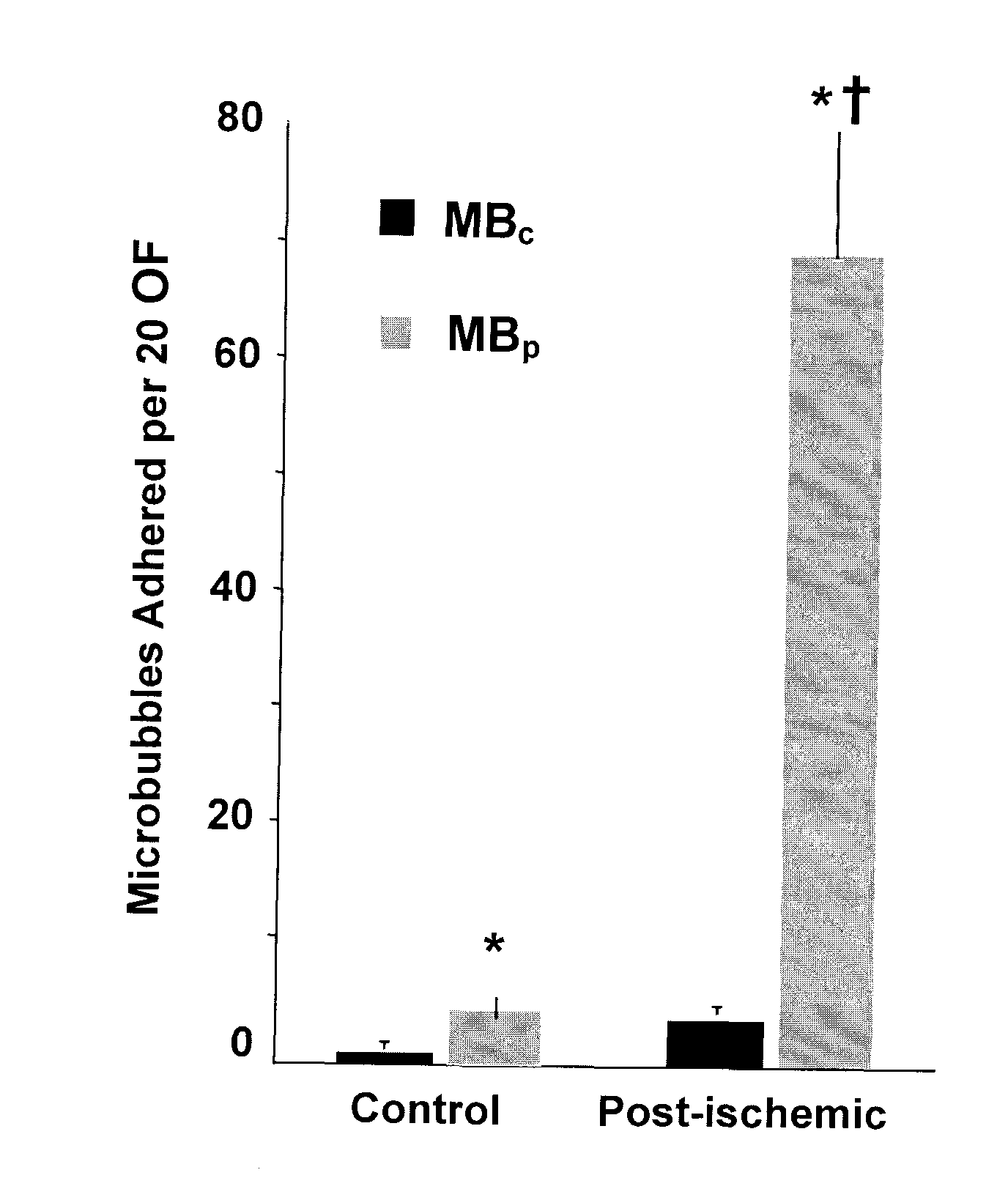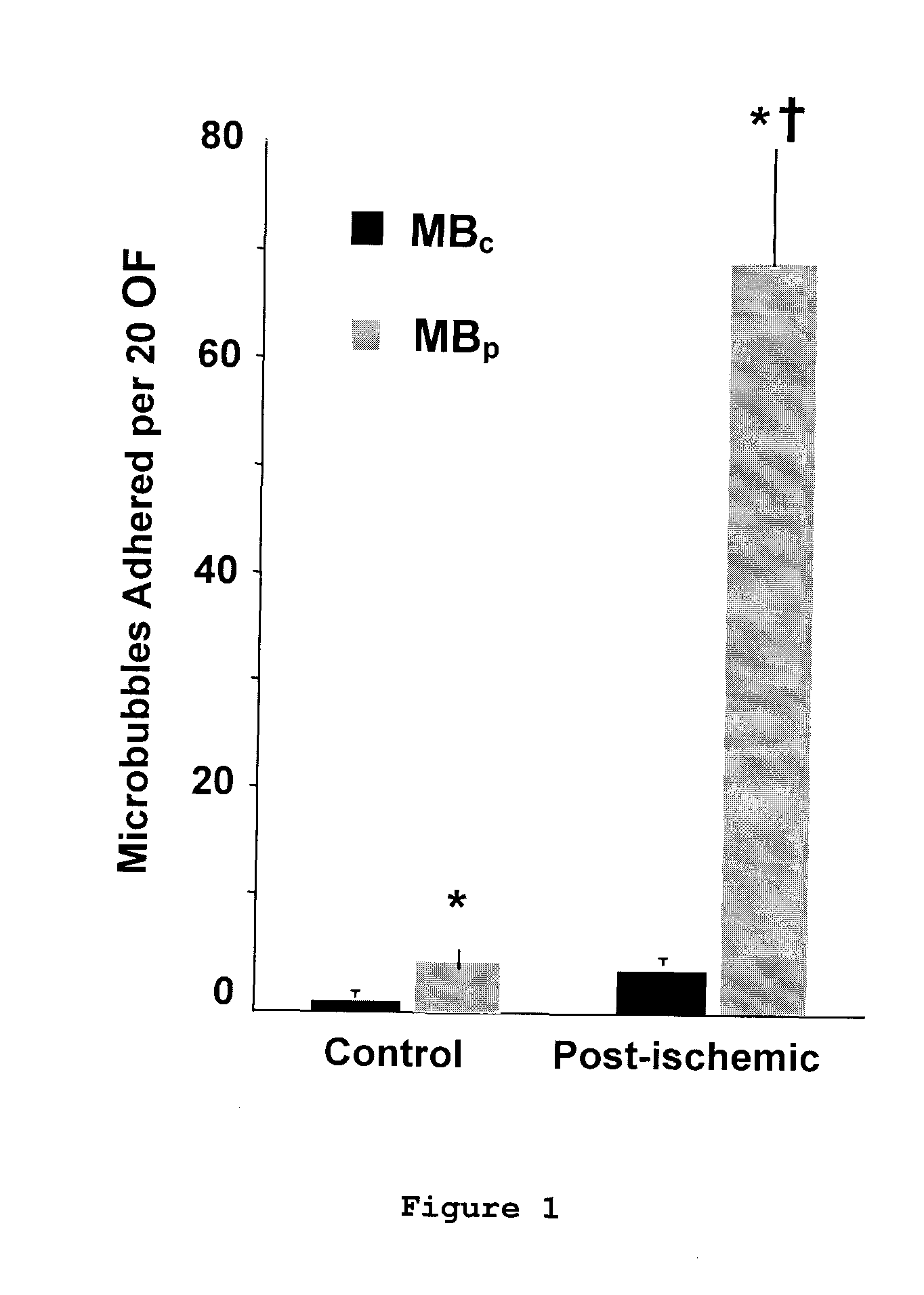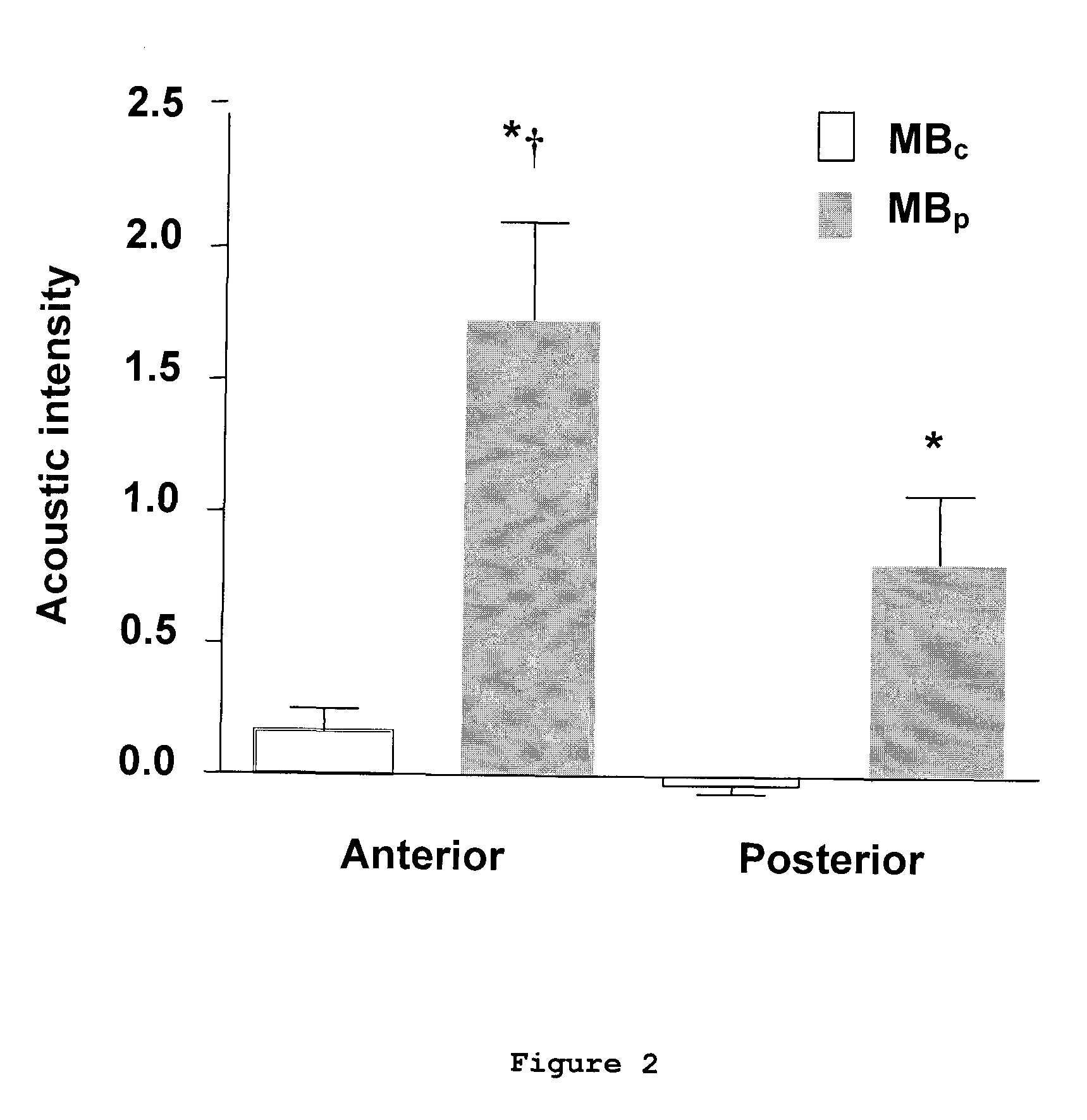Ultrasound Imaging with Targeted Microbubbles
a microbubble and ultrasonic imaging technology, applied in the field of ultrasonic imaging with targeted microbubbles, can solve the problem of relatively low ultrasonic signal from these microbubbles
- Summary
- Abstract
- Description
- Claims
- Application Information
AI Technical Summary
Benefits of technology
Problems solved by technology
Method used
Image
Examples
example 1
Microbubbles Comprising rPGSL-Ig
[0077]The targeted microbubble contrast agent was prepared as follows. Biotinylated microbubbles were prepared by high-power sonication of a decafluorobutane bas-saturated aqueous suspension of distearoylphosphatidylcholine, polyoxyethylene-40-stearate, and distearoyl-phosphatidylethanolamine-PEG(2000)biotin. Microbubbles were washed by flotation centrifugation, exposed to streptavidin (30 μg per 108 microbubbles), and washed. A recombinant P-selectin ligand composed of the amino terminal region of PSGL-1 in a selectin-binding glycoform fused to the Fc portion of human IgG1 (rPSGL-Ig) was conjugated to the microbubble (Y's Therapeutics, Burlingame Calif.). For this process, the Ig portion of the ligand was biotinylated. Microbubbles were then exposed to the biotinylated rPSGL-Ig (50 μg per 108 microbubbles), then washed. Microbubble size and concentration were measured by electrozone sensing (Multisizer III, Beckman-Coulter, Fullerton, Calif.). Select...
example 2
Comparative Studies
Materials and Methods
Preparation of Microbubbles
[0083]Microbubbles with monoclonal antibodies against P-selectin (MBAB); isotype control antibodies (MBc); or rPSGL-Ig (Y's Therapeutics; Tokyo, Japan) (MBPGSL) conjugated to their surfaces were created. Biotinylated microbubbles containing decafluorobutane gas were prepared as previously described (Klibanov et al. (1999) Proc. 26th Intl. Symp. Controlled Rel. Bioact. Mat. 124-125). Approximately 3×108 biotinylated microbubbles were incubated for 30 minutes with 90 μg streptavidin (Sigma) and washed. Aliquots of the suspension (1×108 microbubbles) were incubated for 30 minutes with 75 μg of biotinylated (EZ-Link, Pierce, Rockford, Ill.) rat anti-mouse monoclonal IgG1 against P-selectin (RB40.34) or isotype control antibody (R3-34, Pharmingen Inc., San Diego, Calif.). The antibody concentration used was determined by flow cytometry experiments.
Flow Chamber Studies
[0084]The in vitro binding capability of MBPSGL and MBA...
example 3
Microbubbles with VCAM-1
[0092]Atherosclerosis is a chronic inflammatory disorder that often progresses silently for decades before becoming clinically evident (Ross R.(1999) N Engl J Med 340:115-26). In current clinical practice, C-reactive peptide is the only inflammatory marker routinely used for risk assessment in patients. Non-invasive imaging of vascular changes such as coronary calcification, carotid intimal-medial thickening and plaque morphology have recently been used to assess patient risk (Arad et al. (2000) J. Am. Coll. Cardiol., 36:1253-60; Greenland et al. (2004) JAMA 291:210-5; Chambless et al. (2000) Am. J. Epidemiol., 151:478-87; O'Leary et al. (1999) N. Engl. J. Med., 340:14-22; Leber et al. (2006) J. Am. Coll. Cardiol., 47:672-7). However, these methods detect changes that occur relatively late in the disease process and do not directly assess inflammatory status. Since inflammation participates in plaque initiation and progression, a method capable of imaging the...
PUM
 Login to View More
Login to View More Abstract
Description
Claims
Application Information
 Login to View More
Login to View More - R&D
- Intellectual Property
- Life Sciences
- Materials
- Tech Scout
- Unparalleled Data Quality
- Higher Quality Content
- 60% Fewer Hallucinations
Browse by: Latest US Patents, China's latest patents, Technical Efficacy Thesaurus, Application Domain, Technology Topic, Popular Technical Reports.
© 2025 PatSnap. All rights reserved.Legal|Privacy policy|Modern Slavery Act Transparency Statement|Sitemap|About US| Contact US: help@patsnap.com



